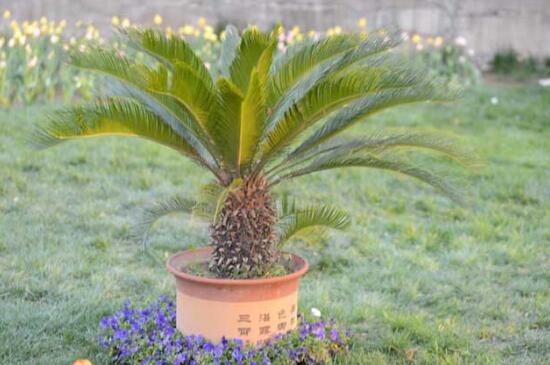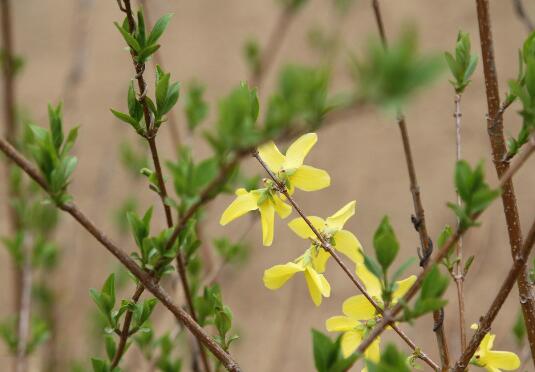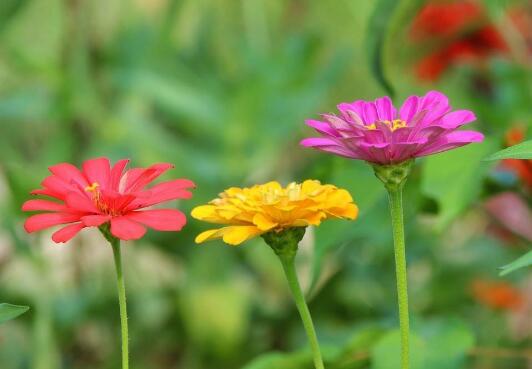How to propagate iron tree, three propagation methods of iron tree (cutting / tillering / sowing)
As a common potted plant, iron tree has a lot of efficacy, in addition to good-looking, there is a good medicinal value. Nowadays, keeping a pot of iron tree at home is the choice of many flower friends, but is a pot of iron tree too monotonous? At this time, we need to master the breeding method of the iron tree, so how does the iron tree reproduce? Today, the editor will give you a detailed introduction.
How to propagate, cuttage / tiller / sow

For novice farmers, it is OK to know the breeding method of iron tree, but if you are an old hand, you should also master the breeding method of iron tree, because it is more interesting to raise it this way. As for how to reproduce the iron tree, there are three main methods: cutting, tillering and sowing. If you want a pot of iron tree to become more than one pot, go to the concrete operation with the editor.
2. Three propagation methods of iron tree (1) sowing and propagation of iron tree
When it comes to the breeding methods of iron trees, many people will think of sowing seeds. However, it takes 10 or even 20 years for the iron tree to blossom, and the seeds will not germinate until next year, so the sowing method is rarely used. Next, the editor focuses on the two propagation methods of cutting and tillering.
(2) Cuttage propagation of Fructus przewalskii
1. Cutting time
When it comes to the propagation of indoor potted plants, cutting is the first thing that comes to mind. It is understood that the iron tree can also be propagated by cuttings, and the time can be selected in May.
2. Cuttings selection
On the iron tree with good growth, the strong and pest-free twigs were selected as cuttings. Then cut off part of the leaves on the branches, and then cut off the lower part of the cuttings.
3. Cuttage starts
Insert the cuttings into the prepared cultivation soil and insert the cuttings with a depth of 1 beat 2-1 hand 3. In order to avoid the rupture of the base of the cuttings, you can first punch holes with sticks and then insert them, then compacted and watered them thoroughly.
(3) Tillering propagation of iron tree.
1. Tillering time
In addition to sowing and cutting, the most suitable breeding method for iron tree is tillering. The specific time can be chosen when the growth stops in winter, or from January to February in early spring to early summer, but it is best from March to April.
2. Selection of tillering buds
When the old stem of the iron tree has a tiller bud as big as an egg, it can be disinfected with a sharp blade and cut away from the mother plant and placed in the shade for about a week. Pay attention to cut the stem bark as little as possible, and cut off the leaves.
3. Tillering begins
The treated tiller buds were planted in plain sand with a depth of 1 / 2 of the height of tiller buds. In order to prevent the wound from rotting, plant ash, charcoal powder or sulfur powder should be applied to the wound before planting. After planting, water once, put in half-shade place, keep 27 ℃ 30 min, root in 45 days and grow leaves at the same time.
Generally speaking, it is not difficult to breed iron trees. Cuttings, tillers and sowing can all be successful, but tillers are the most suitable for indoor use. Of course, the method is dead, people are alive, we can according to the actual situation, choose the method to breed. With regard to the breeding method of iron tree, the editor has introduced this, hoping to give you some help.
The propagation method of iron tree Cycas is mainly propagated by tillers, and it can also be sown or cut. Sowing and reproduction: harvest cycad seeds in October or full seeds for no more than two years, soak them in warm water of about 50 ℃ for 24 hours, then soak them with dilute hydrochloric acid or dilute sulfuric acid for 10 minutes, then rinse them with clean water, change water every other day, wait for the seed coat to be completely swollen and soft, peel off the outer seed coat manually, wash off the pulp, dry the seeds, and then store them. Seed sand storage treatment was carried out around December. Because of its thick and hard seed skin, it can be treated by variable temperature method and finally stored in sand. Use clean sandy loam, river sand, perlite and other materials with good water conservation and permeability to make the seeding bed with a thickness of not less than 40 cm. Sow the prepared seeds into the bed at a distance of 5 to 20 ℃ cm, with a depth of about 3 cm. Then cover the river sand with a thickness of 3 cm, depending on the dryness of the soil and fine sand on the bed, control the amount of water, and then cover the plastic film for moisturizing and heat preservation, open the film once a week on a sunny morning, the soil should be watered to keep moist, and cover the film at sunset in the afternoon. Generally, it takes 4 to 6 months for cycads to store sand. During this period, the temperature and humidity of the sand should be maintained and the appropriate temperature is required to be 18: 25 ℃. The relative humidity is 800.90%. To keep warm in winter, it should not be lower than 12 ℃. In the second year, from May to June, the seeds germinated and broke their shells, and from July to August, they germinated and grew a true leaf. Ramet propagation: in summer, the sucking buds should be separated from the stem of the mother plant, inserted into the open field or basin, buried in half of the soil, the survival rate of ramet reproduction can reach 80% 90%, the growth of sucking buds is slow, it is best to separate the sucking buds after 3 years, and the sucking buds with small wound are easy to live. Cadres can also be cut into sections of 15 to 20 centimeters long and buried in sandy soil so that they can regenerate new buds around the cadres and then be planted and cultivated. Cycads are suitable for growing in direct sunlight or bright scattered light. It is best to be semi-shaded in summer, the temperature is maintained at 15-20 ℃, and the soil and air humidity is higher, so the leaves should be sprayed frequently. The plant has no dormant period, the suitable winter temperature is 12-16 ℃, and the plant has a considerable degree of cold resistance. During the period of 3-9 ℃, liquid fertilizer should be applied once a month, and the suitable cultivation medium should be the mixture of organic soil, mud carbon and fine sand. The basin soil is changed every 2-3 years, and new soil and base fertilizer are added to help growth. The application of liquid fertilizer several times in summer and the addition of ferrous sulfate solution can make the leaf color greener. After autumn, the diseases and insect pests of cycads with reduced watering water are the most common, and the leaves damaged by scale insects should be kept well ventilated at first. After the discovery of shell insects, observe the spray stone sulfur mixture or fluoroacetylammonium during the incubation period. How to breed iron tree
Iron trees are botanically called cycads, alias Phoenix-tailed bananas, plantains, fire-avoiding plantains, belonging to the cycads family and evergreen trees of the cycads genus. It originated in south-central China, India, Japan and Indonesia, and originated in East and Southeast Asia. Zhejiang, Jiangxi, Hunan, Sichuan and other places are widely cultivated. North China, Northwest and other places as potted plants for indoor viewing. Cycads like sunshine, dry and ventilated environment, not cold-resistant, good fertilizer, like sandy soil, slow growth.
Cycads can be as high as 8 meters in the country of origin, indoor potted plants up to 3 meters high, the stem is thick cylindrical, unbranched, with thick leaf scars, forming fish scales. The leaf cluster is born at the top of the stem and is a large pinnate compound leaf, about 1 meter long. Leaflets linear, leathery, tip hard, dark green glossy, leaf margin revolute. Every spring, the old leaves fall off one after another; the flowers are unisexual, born at the top of the stem, dioecious, and the male flowers are spirally arranged in the shape of a pineapple, covered with pilose hairs, fresh yellowish at the beginning and brown after maturity. The female flower is larger, with many palmate scales, flattened in shape and gradually divided into a pine tower. Cycads rarely bloom, 20-or 30-year-old trees can blossom, so it is called "Millennium Iron Tree flowering", flowering from June to August.
Cycads are mainly propagated by tillers, and they can also be propagated by sowing or cutting.
Sowing and reproduction: harvest cycad seeds in October or full seeds for no more than two years, soak them in warm water of about 50 ℃ for 24 hours, then soak them with dilute hydrochloric acid or dilute sulfuric acid for 10 minutes, then rinse them with clean water, change water every other day, wait for the seed coat to be completely swollen and soft, peel off the outer seed coat manually, wash off the pulp, dry the seeds, and then store them. Seed sand storage treatment was carried out around December. Because of its thick and hard seed skin, it can be treated by variable temperature method and finally stored in sand. Use clean sandy loam, river sand, perlite and other materials with good water conservation and permeability to make the seeding bed with a thickness of not less than 40 cm. Sow the prepared seeds into the bed at a distance of 5 to 20 ℃ cm, with a depth of about 3 cm. Then cover the river sand with a thickness of 3 cm, depending on the dryness of the soil and fine sand on the bed, control the amount of water, and then cover the plastic film for moisturizing and heat preservation, open the film once a week on a sunny morning, the soil should be watered to keep moist, and cover the film at sunset in the afternoon. Generally, it takes 4 to 6 months for cycads to store sand. During this period, the temperature and humidity of the sand should be maintained and the appropriate temperature is required to be 18: 25 ℃. The relative humidity is 800.90%. To keep warm in winter, it should not be lower than 12 ℃. In the second year, from May to June, the seeds germinated and broke their shells, and from July to August, they germinated and grew a true leaf.
Ramet propagation: in summer, the sucking buds should be separated from the stem of the mother plant, inserted into the open field or basin, buried in half of the soil, the survival rate of ramet reproduction can reach 80% 90%, the growth of sucking buds is slow, it is best to separate the sucking buds after 3 years, and the sucking buds with small wound are easy to live. Cadres can also be cut into sections of 15 to 20 centimeters long and buried in sandy soil so that they can regenerate new buds around the cadres and then be planted and cultivated.
Cycads are suitable for growing in direct sunlight or bright scattered light. It is best to be semi-shaded in summer, the temperature is maintained at 15-20 ℃, and the soil and air humidity is higher, so the leaves should be sprayed frequently. The plant has no dormant period, the suitable winter temperature is 12-16 ℃, and the plant has a considerable degree of cold resistance. During the period of 3-9 ℃, liquid fertilizer should be applied once a month, and the suitable cultivation medium should be the mixture of organic soil, mud carbon and fine sand. The basin soil is changed every 2-3 years, and new soil and base fertilizer are added to help growth. The application of liquid fertilizer several times in summer and the addition of ferrous sulfate solution can make the leaf color greener. After autumn, the diseases and insect pests of cycads with reduced watering water are the most common, and the leaves damaged by scale insects should be kept well ventilated at first. After the discovery of shell insects, observe the spray stone sulfur mixture or fluoroacetylammonium during the incubation period.
- Prev

How to sow Forsythia suspensa? planting techniques of Forsythia suspensa / sowing in spring / emergence in 8-9 days
In the breeding methods of Forsythia suspensa, sowing and reproduction is a more commonly used method, this method has been tested countless times, so the survival rate is still relatively high, of course, the premise is that you have to master the correct sowing method, so how to sow Forsythia suspensa? What is the planting technology of Forsythia suspensa?
- Next

The best month to sow zinnia seeds, the planting method of zinnia / planting from April to June
Among the breeding methods of zinnia, sowing and reproduction is a more commonly used method, and the survival rate is relatively high, but if you want to plant successfully, there are many things you need to pay attention to. When is the best month to sow seeds? What are the planting methods of zinzhiju? Next, the editor will take you to learn about it.
Related
- Fuxing push coffee new agricultural production and marketing class: lack of small-scale processing plants
- Jujube rice field leisure farm deep ploughing Yilan for five years to create a space for organic food and play
- Nongyu Farm-A trial of organic papaya for brave women with advanced technology
- Four points for attention in the prevention and control of diseases and insect pests of edible fungi
- How to add nutrient solution to Edible Fungi
- Is there any good way to control edible fungus mites?
- Open Inoculation Technology of Edible Fungi
- Is there any clever way to use fertilizer for edible fungus in winter?
- What agents are used to kill the pathogens of edible fungi in the mushroom shed?
- Rapid drying of Edible Fungi

